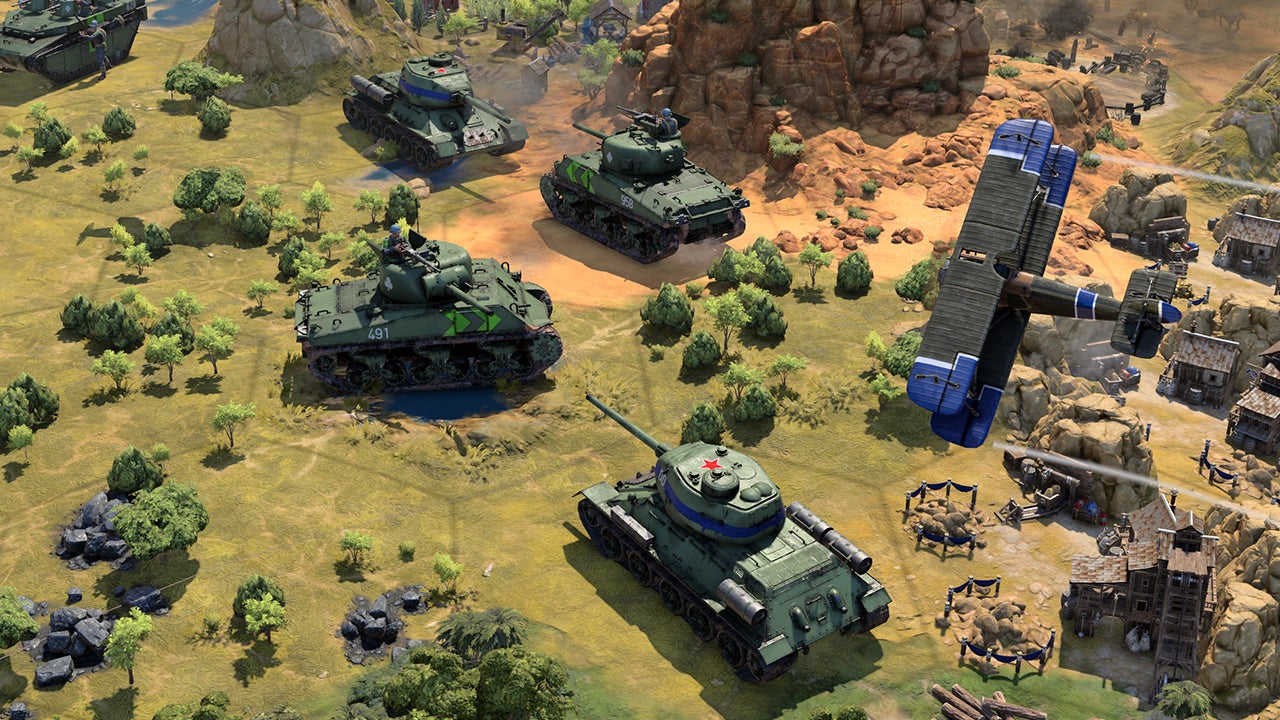There's nothing quite like the moment right before sitting down to see a new Civilization game for the first time – particularly since this is the longest we've ever had to wait for a new one – and I'm happy to say I came away with a pretty positive outlook on Civilization VII. It's a more daring, risky take on the formula than any of the past few iterations have been, and I think that's definitely the way to go, considering those older games aren't going anywhere and are still quite playable. From Ages that completely transform your chosen civ, to a bold, readable, but grounded new art style, Firaxis is already putting their best foot forward.
The historical 4X space has gotten a lot more crowded since Civ 6, and it seems apparent Firaxis has been paying attention to what others dipping a toe into the genre have been doing. That leads us to the biggest single change Civ 7 is introducing: like in 2020's Humankind, you won't be playing a single civilization for your entire campaign.
There are three distinct Ages: Antiquity, Exploration, and Modern. The devs were quick to point out that Ages aren't exactly equivalent to Eras in past Civ games, since they're quite a bit longer and more distinct. By turn 125 on Standard speed, I was still in 1150 BCE according to the RP clock, for instance. A campaign should take about the same amount of time as in past Civ games. You'll pick a new civ to play for each Age, with its own bonuses, units, and map graphics. The thing that will stay with you is your initial choice of leader, a 3D avatar for your entire campaign that comes with their own set of permanent bonuses.
The leaders themselves remain visually consistent through the ages – you won't see Hatshepsut in a pant suit in modern times, for instance. And they're all civilization agnostic. Hatshepsut's bonuses synergize well with those of the ancient Egyptian civ, so you'll have some incentive to match a leader to their historical people if you're min-maxing. But you can play her as the leader of any civ. After all, you might be finishing the campaign as the United States, so there will be some mixing and matching regardless.
HEAD OF STATE
Firaxis is also taking the opportunity to include some leaders who weren't necessarily top-level political figures this time, so we don't just end up with the exact same cast. Ben Franklin was specifically called out, though we haven't seen him fully animated yet.
What isn't totally agnostic is your choice of a new civ in the coming age, addressing one of my gripes with Humankind – that you could go from Celts to Chinese with little or no narrative context. Every starting civ will have at least one "natural" path that's always available to them. Egypt can naturally transition into Songhai, and then Buganda. But everyone can also potentially earn access to certain later-age civs that are unlocked by gameplay choices. For example, cultivating several horse resources in Antiquity can allow you to become the Mongols for the Exploration Age. Other interesting progression paths mentioned included starting as Rome, then becoming the Normans, and finally the England.

Transitioning between Ages will come with a period of Crisis, and I got to see just the beginning of one of them for Antiquity: The Rising Storm. Depicting the fall of the great empires of old, it required me to take one Crisis policy card (similar to Civ 6's Dark Ages), where all of them were bad, so it was kind of a "pick your poison" moment. At the same time, new groups of independent people – who have completely replaced barbarians, and can be dealt with militarily or diplomatically – started spawning around my hinterlands.
LONE AND LEVEL SANDS
Transitioning to a new Age doesn't only give you new mechanical bonuses, though. Lead designer Ed Beach used the city of London as an example of how you build cities in Civ 7. Comparing maps of Roman London to medieval London, very little of the former city is left standing. And the same is true if you compare medieval London to modern London. New civilizations are built over the ruins of the past. And through a concept called "overbuilding," that's literally what we'll be doing in the later ages of Civ 7.

Cities are still sprawled across multiple tiles like in Civ 6, but there are now only two types of districts: Urban and Rural. Urban districts can hold up to two buildings at the start of Antiquity, increasing over time, and might gain special meta attributes based on what you build there. For Egypt, I was able to establish a unique funerary district by building both of their civ unique buildings in the same place. So a "science district" isn't a thing you plop down that is going to start out being focused entirely on science. It's just an urban district that you chose to specialize toward science with synergistic buildings.
Rural districts are more or less what used to be called tile improvements. Remember builders? They're gone! Moving citizens around between tiles? Also gone! Instead, what now happens is, when you would gain a new citizen through population growth, you immediately plop down a new district (which will be empty if it's urban – you still need to spend production on city buildings), or possibly add a specialist to an existing one if you have unlocked the civics for it.
In the build I played, you could only place districts adjacent to existing ones, which on the one hand creates tighter and more believable urban cores. I didn't really think this restriction made sense for rural districts, though. I'd like to be able to place those a bit further out, since the look of outlying mines and farms, I think, creates a really nice scene. And the way it is currently, you can't really save room for future urban sprawl, so I ended up with kind of a weird-looking checkerboard of urban and rural, which doesn't feel especially authentic.

Settling new cities also now starts them out as a Town, which doesn't have a production queue and instead turns all of its production into gold. You can still buy things in a town directly with gold, and the cost of upgrading it to a city will be reduced by how much you've built it up this way already. I found this to be a nice option, since I don't really like managing 15 different production queues.
AMBER WAVES OF GRAIN
Overall, Civ 7 looks great so far. Civ 6's art style was, shall we say, divisive, and I was more on the negative side, for sure. All these years later, I still think Civ 5 looks better than its direct successor. Civ 7 has taken another stylized, but much more grounded and tactile, approach. The main influences on the art style were painted miniatures, model trains, dioramas, and museum displays. And everything on the map is great to look at. I really did feel like I could reach down and pick these little guys up to get a closer look at them.
It's the first Civ game in a while that really feels "next gen" in a visual sense. The mountains look a bit less… mountain-y? More like isolated peaks than the nice, realistic ranges you'd get in previous games. But that's my only gripe so far.

The leaders, continuing on the tradition of Civ 6, are rendered with tons of detail and personality. We got a look at Hatshepsut of Egypt, Amina of Zazzau (the "natural" leader for Aksum), Augustus of Rome, and Ashoka of the Maurya. On the diplomatic screen, both of the negotiating leaders are now shown interacting, which adds a nice bit of extra dramatic flair.
Diplomacy has also been greatly reworked from Civ 6. Influence is now a baseline currency produced by certain buildings, and you spend it on direct actions that target another civ. Firaxis wants to reduce the emphasis on transactional horse trading, so every time you do something diplomatically, it's more of a specific jab or handshake. Influence also has a fairly low cap, and is use it or lose it, encouraging you to engage in diplomacy regularly.
One really interesting example of this was a treaty Amina kept hitting me with when we were on less than great terms, which would cause my relationship with my BFF Augustus to deteriorate unless I spent a larger ante of influence to counter it. This presents some diabolical ways you can play other civs against each other.

The other really great twist with Influence is that you can spend it during a war to increase your side's War Support, which works like a diplomatic tug-of-war. If one side has invested a lot more influence than the other, the side with less war support will suffer scaling penalties to combat effectiveness and happiness in their cities. So diplomacy is now key to the military game as well, which I love.
AD ASTRA
Even with only three hours of hands-on time, I could probably talk for six or more about Civilization 7. There's so much I haven't even touched on yet, from commanders that can "pack up" entire armies for easier transport across the map, to Culture and Leader-specific perk trees. So keep an eye out for much, much more about Civilization 7 between now and release.




